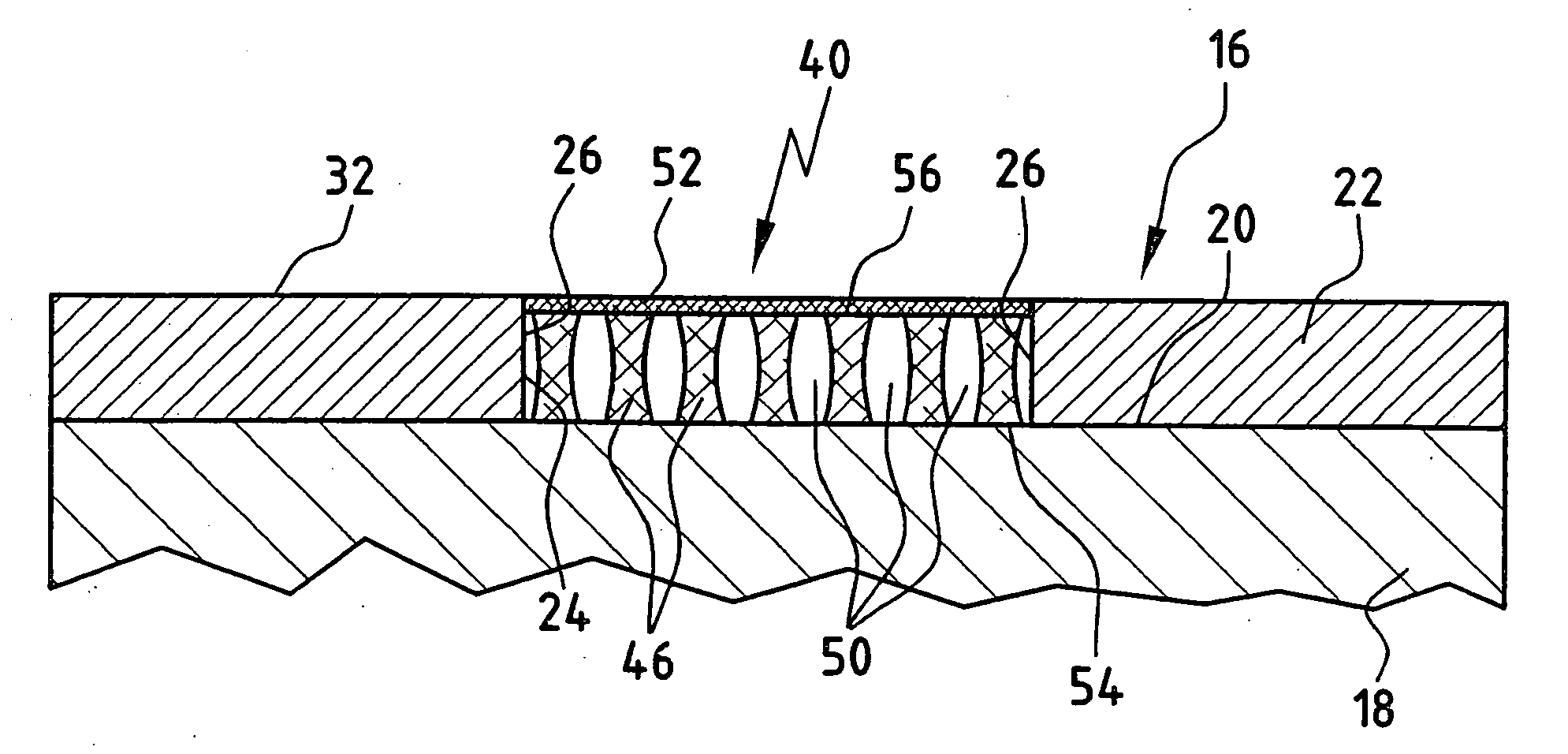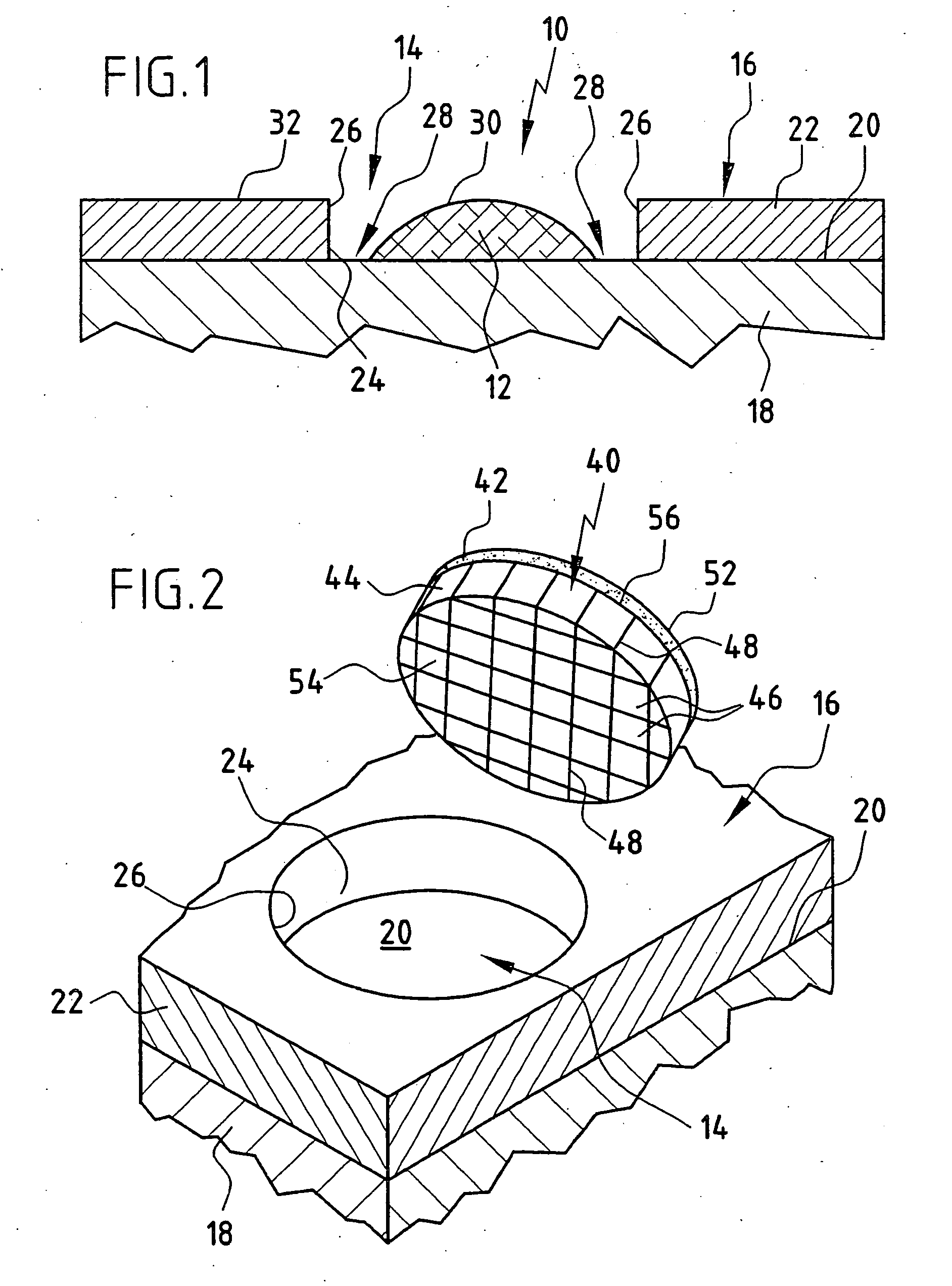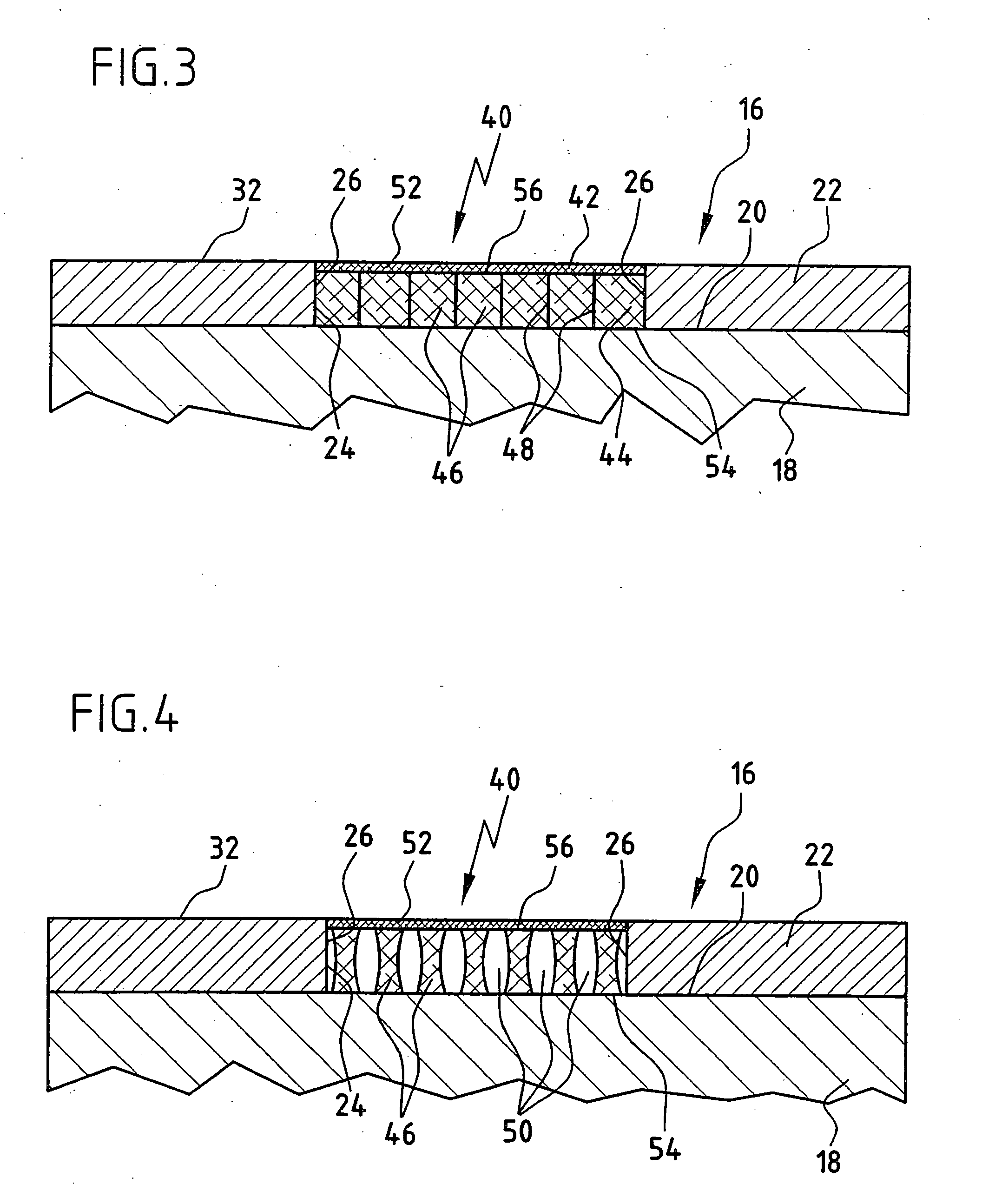Cartilage replacement implant and method for producing a cartilage replacement implant
a cartilage replacement and cartilage technology, applied in the field of cartilage replacement implants, can solve the problems of biomaterials used developing the tendency to contract, affecting the suction effect of implants, and affecting the suction effect, so as to facilitate the suction effect of implants
- Summary
- Abstract
- Description
- Claims
- Application Information
AI Technical Summary
Benefits of technology
Problems solved by technology
Method used
Image
Examples
Embodiment Construction
[0076]FIG. 1 shows a cartilage replacement implant 10, as it is known from the prior art. It consists of only one cell carrier 12, which may be inoculated with cells or not prior to implantation. In FIG. 1, the cartilage replacement implant 10 is inserted into a cartilage defect 14 of an otherwise intact cartilage area 16 of a joint in the human body. The cartilage area 16 is formed by a bone 18 and articular cartilage 22 covering the surface 20 thereof. For the sake of simplicity, the structure of the bone 18 and the articular cartilage 22 covering the surface 20 thereof is represented as a two-layer model. In nature, the transition from bone to cartilage usually occurs via a gradient of several millimeters in length. The cartilage defect 14 may have been caused by, for example, traumatic or inflammatory, degenerative processes. As shown schematically in FIG. 1, the cartilage defect 14 forms a gap in the cartilage area 16, which is delimited at the sides by cartilage edges 26 of th...
PUM
| Property | Measurement | Unit |
|---|---|---|
| Thickness | aaaaa | aaaaa |
| Thickness | aaaaa | aaaaa |
| Thickness | aaaaa | aaaaa |
Abstract
Description
Claims
Application Information
 Login to View More
Login to View More - R&D
- Intellectual Property
- Life Sciences
- Materials
- Tech Scout
- Unparalleled Data Quality
- Higher Quality Content
- 60% Fewer Hallucinations
Browse by: Latest US Patents, China's latest patents, Technical Efficacy Thesaurus, Application Domain, Technology Topic, Popular Technical Reports.
© 2025 PatSnap. All rights reserved.Legal|Privacy policy|Modern Slavery Act Transparency Statement|Sitemap|About US| Contact US: help@patsnap.com



